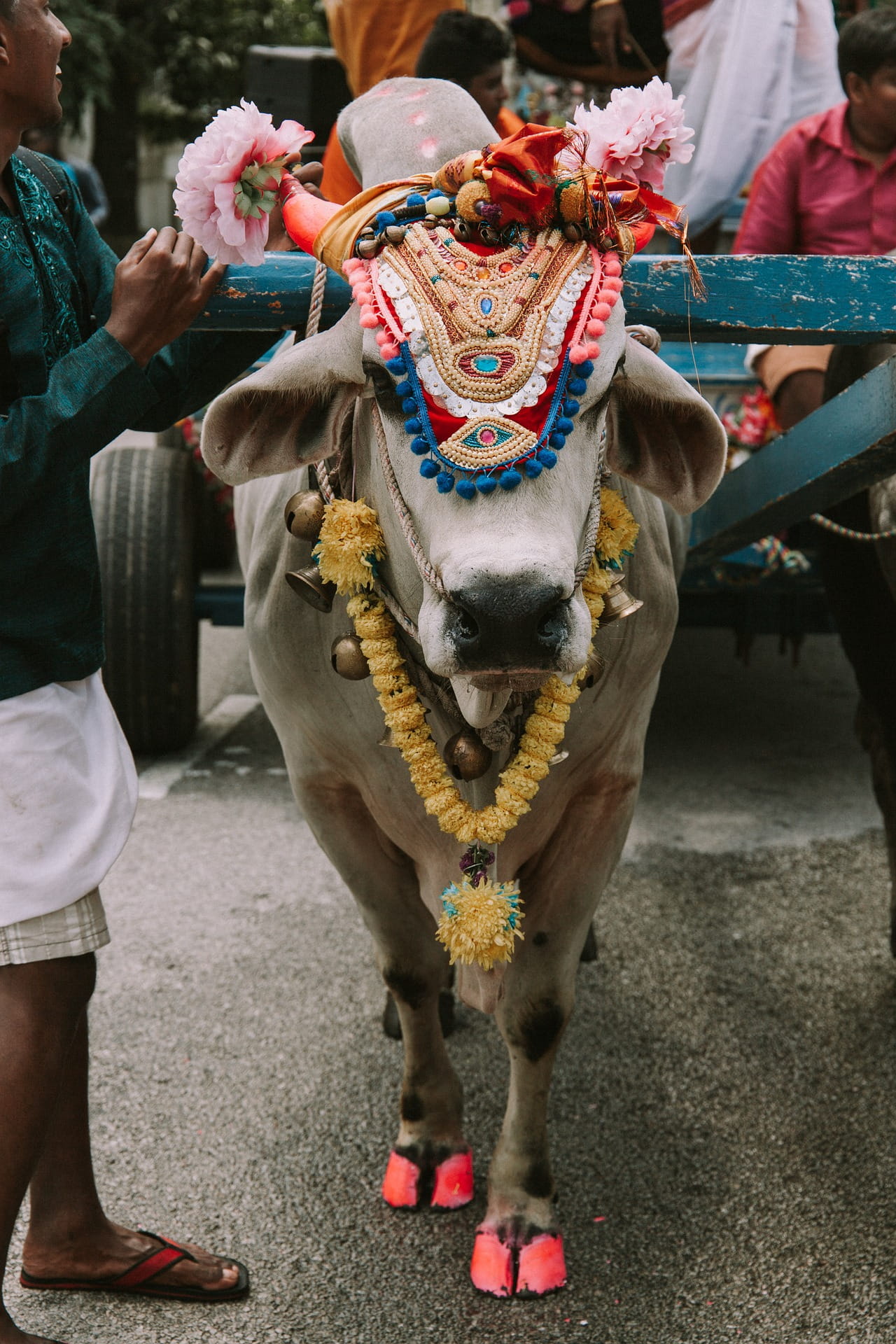Like many Indian festivals, Ugadi holds deep symbolic meaning and invites those who celebrate to not only make New Year’s style resolutions, it also encourages them to move more deeply into contact with their divine nature through prayers, mantra, and a practice of purification that begins with a shower at dawn. Especially celebrated by Hindus in South India, Ugadi ushers in the beginning of spring, the first of all seasons, and is accompanied by the new shoots of plants and budding flowers. It coincides with the arrival of hot weather and school holidays. This New Year festival is particularly celebrated in the Indian states of Karnataka and Andhra Pradesh.
Celebrations are marked by new clothes and special dishes like the Ugadi Pachhadi which mixes six flavors of bitter, sweet, sour, spicy and savory that represent six feelings or life experiences that may be encountered during the New Year. These are combined in a mixture and eaten together as a symbolic reminder to accept both joys and sorrows with equanimity. The ingredients may include jaggery (from sugar cane) or ripe banana to represent sweetness; bitter neem for sadness; hot chilies for anger; green mango for surprise; and tart tamarind for sourness.
The preparations for Ugadi begin days before with a ritual, spring house cleaning, shopping for new clothes, and preparations for the festival. When the New Year begins, devotees worship and pray for blessings from God for health and prosperity. Families come together for celebrations and prayers that fill the towns with excitement and joy. Houses may be decorated with fresh mango leaves and garlands of flowers. Intricate chalk drawings called “rangolis” may be drawn at the thresholds of houses to invite in good and keep away evil.
Traditionally people gather with elders at the temples or in community to listen to the Panchangam, the astrology and predictions for the coming year. These yearly forecasts can be found on TV channels as well. People may also make New Year’s resolutions, much as in the Western New Year’s celebrations.
Family and friends send Ugadi greeting cards with greetings like: “May Lord Ganesha bless you with peace, happiness, and prosperity” and “Wishing you a happy and prosperous Ugadi!” Ugadi is called by other names and also celebrated in other areas of India. In Maharashtra the day is called, Gudi Padwa. It’s also the day of poets where poetry writers recite their works in public. Ugadi is celebrated on the first day of the bright fortnight of the first month (called Chaitra) in the first season of the year.
Debra Moffitt is the award winning author of Awake in the World: 108 Practices to Live a Divinely Inspired Life and Garden of Bliss. A visionary, dreamer and teacher, she’s devoted to nurturing the spiritual in everyday life. She leads workshops on spiritual practices, writing and creativity in the U.S. and Europe. More at Awake in the World and on Facebook here.

